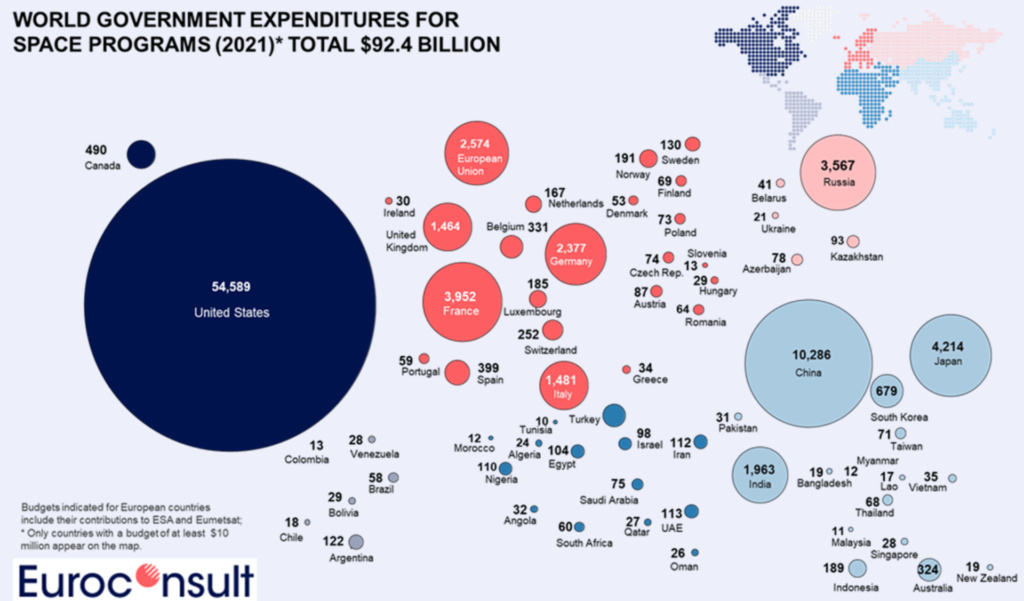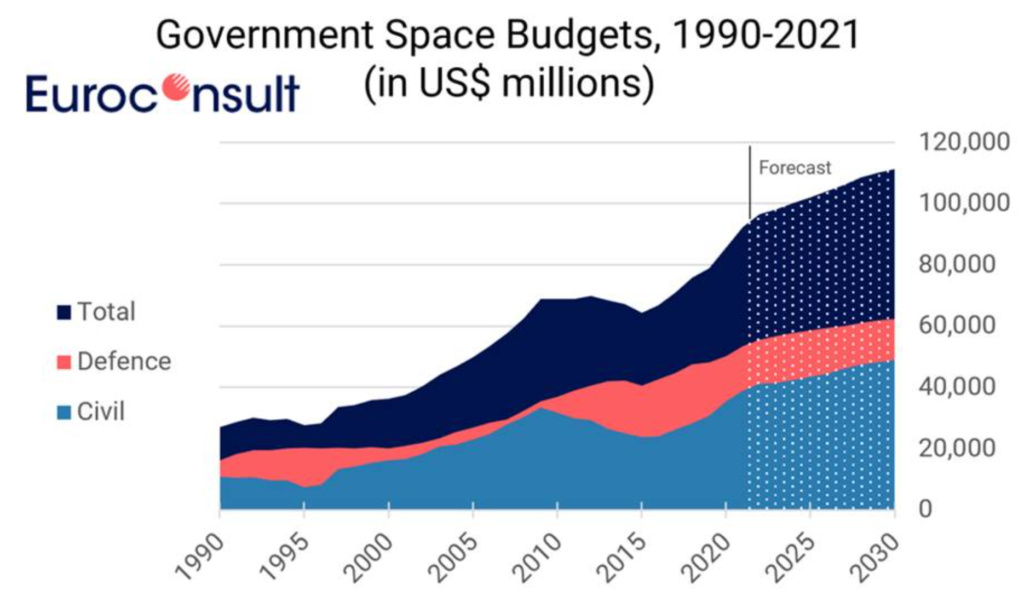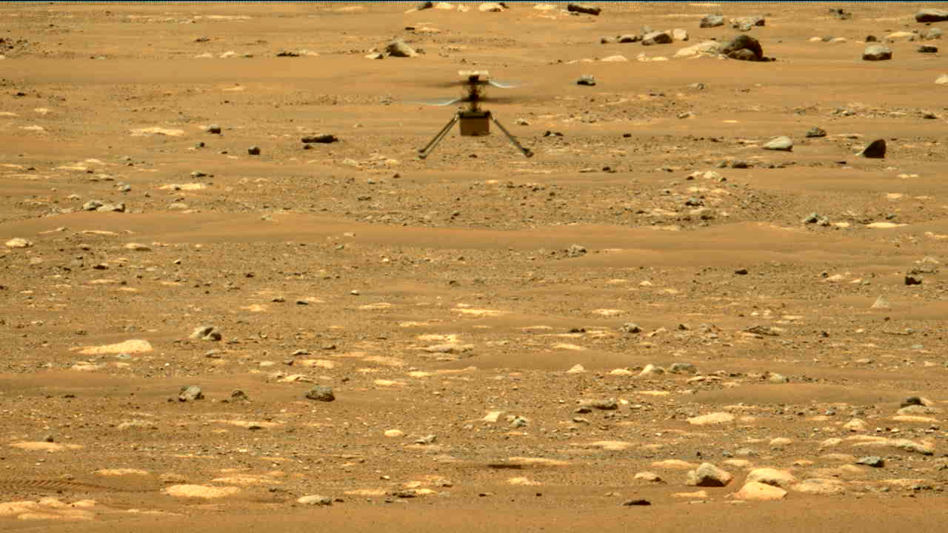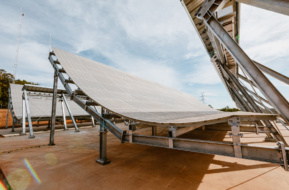Despite the pandemic and an uncertain macroeconomic backdrop, 2021 was a banner year for government space spending. Total investment topped $92B, according to Euroconsult’s latest Government Space Programs report. That’s an 8% annual jump over 2020, though with today’s inflation, who knows what the real increase really was…
Civil vs. military breakdown: Civilian space programs received a cumulative $53B in 2021 last year, while military budgets totaled $39B. While the latter represented ~42%, the military share of government space spend is increasing, Euroconsult reports.
Catalysts for investment? Euroconsult highlights two primary drivers:
- A widened scope of ambition for space exploration programs, from the moon to Mars.
- Geopolitical rivalries that are spilling over into space, as great powers increasingly militarize the domain.

Narrative violation? Despite rhetoric about a rising threat from its space rivals, at ~$54.6B, the US outspent China by over 5X and Russia by 15X. US-allied countries also represent a large share of total investment. To be fair, the hardest data to obtain (or truly know) is spending on classified military/intelligence satellites, orbital weapons under development, etc…
Some highlights…The robotic population density of Mars, from rovers to helicopters to orbiters, is growing. China launched a space station and sent taikonauts to it. JWST had a buzzer-beater, picture-perfect Christmas launch. And plenty of other space programs put new scientific payloads into orbit.
- And…lowlights? The increased congestion of LEO, proliferation of debris, Russia’s ASAT test, and other episodes of in-space saber rattling.
Looking forward: Euroconsult forecasts that governments will spend $1 trillion on space over this decade, with total investment expected to top $100B per annum around 2025.





